Growth for Startups
A comprehensive guide to startup growth covering product-market fit measurement, growth channels, conversion optimization, and data-driven decision making through A/B testing.
What will be covered
- Product Market fit & Retention
- Growth channels & tactics
- Making decisions with with A/B testing
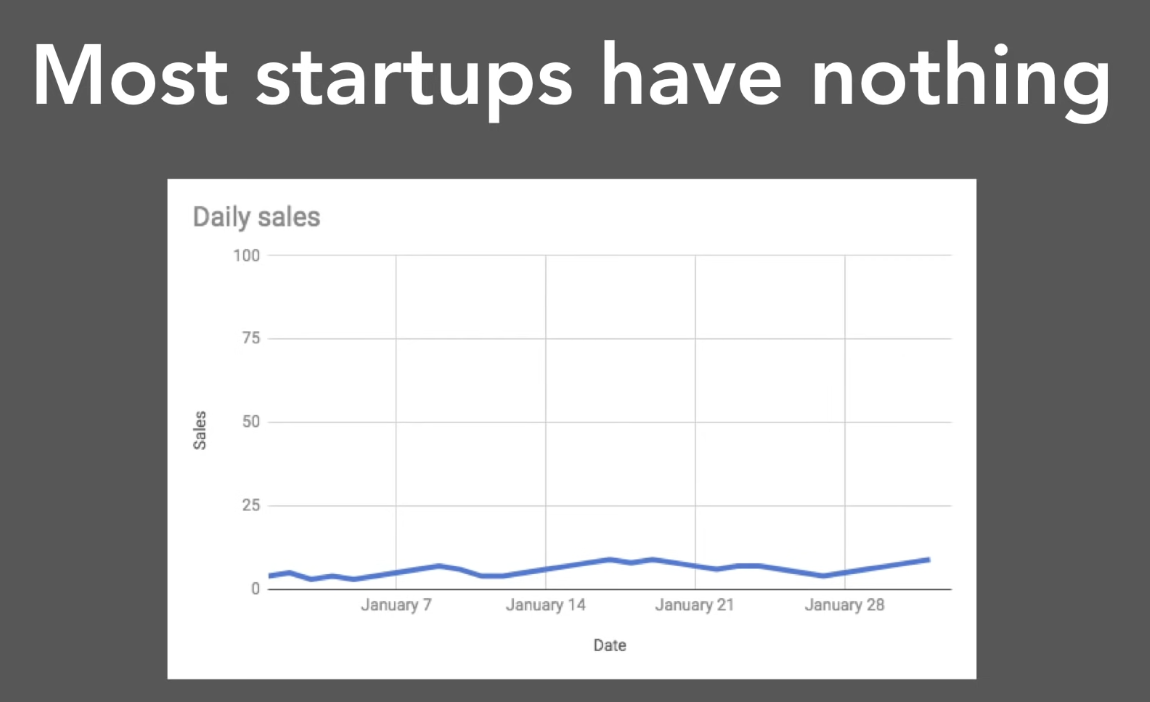
- Most start-up doesn’t have product market fit
- Founder believe and convince themself they do, but the truth is for most companies is not working
- Most people also believe
“if you build it, they will come”but in reality: “If you build it, they won’t come” - Important read: Do Things that Don't Scale
- Talk to your users and watch them use your product
- What are the challenges you’re having with the product?
- What are the things that are not working?
- Can you show me how you use the product?
- Fix and make the product work for early users
- Lesson: Startups take off because founders make them take off
- Typically people start with friend → friends of friends → eventually people that not your friends of friends (people that you need to reach early on)
- One way to grow when you are small: Doing things that don’t scale
Product-market fit
- How to use data (unbiased) to understand if you’ve made something people want
- Identify the metric that represent the value my users get from my product
- Measure the repeat usage of that metrics
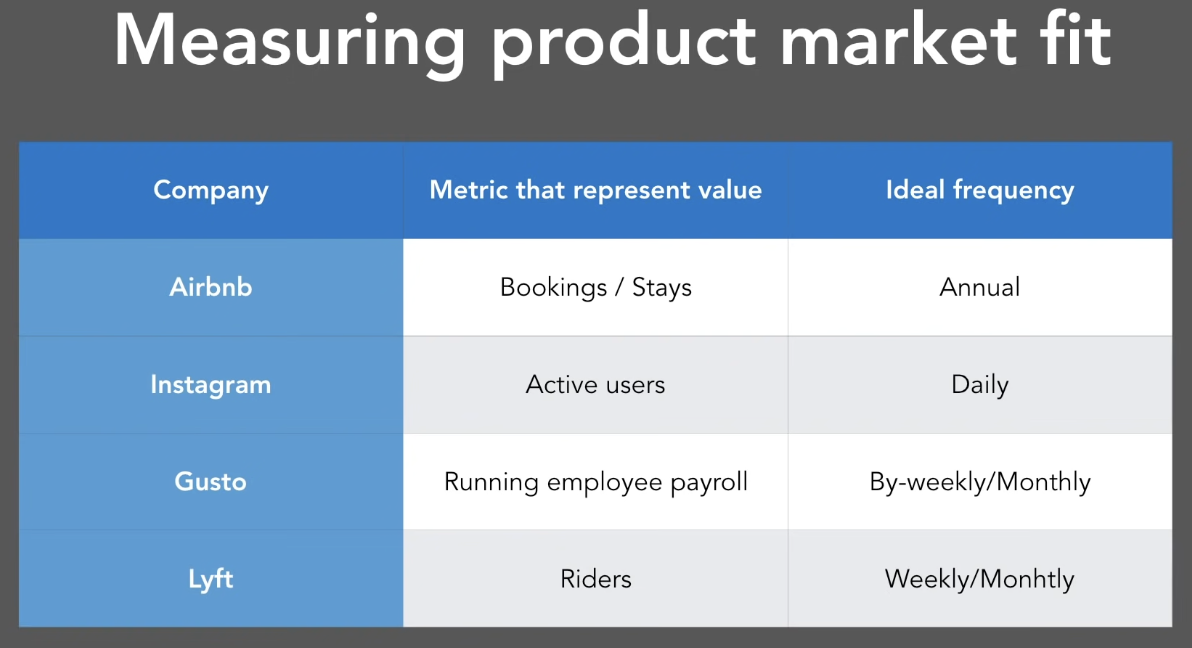
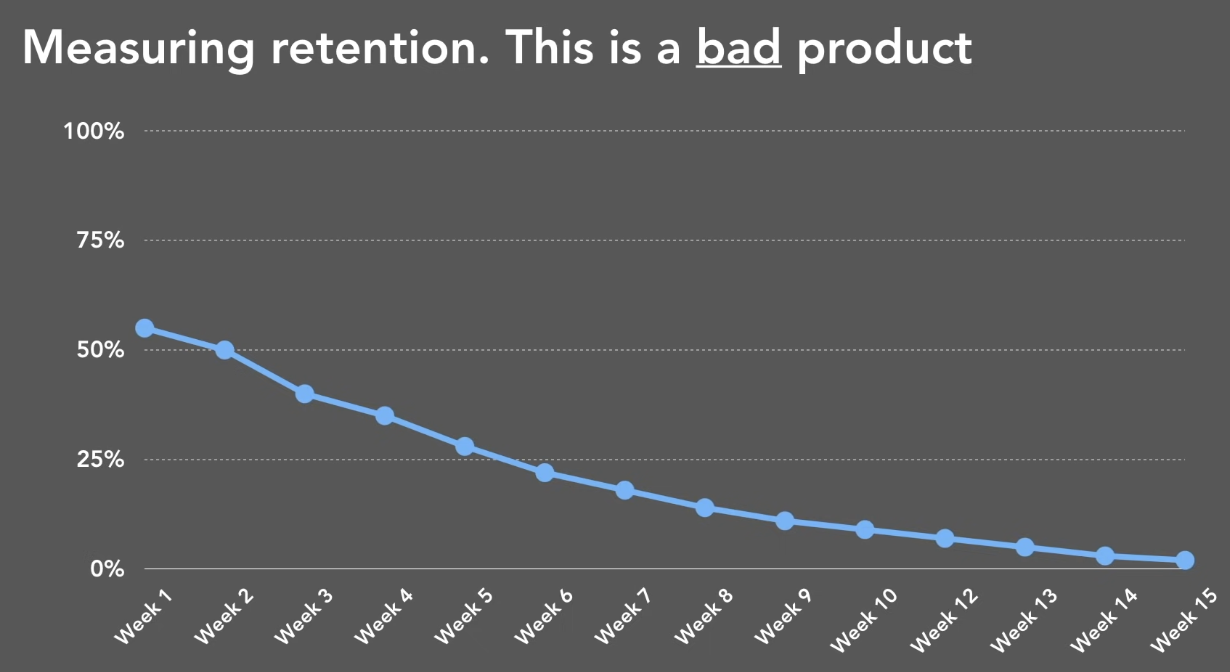
- Repeat usage are the best unbiased way to figure it out if someone liking your product
- They might tell you things but what they do is gonna be the most important thing
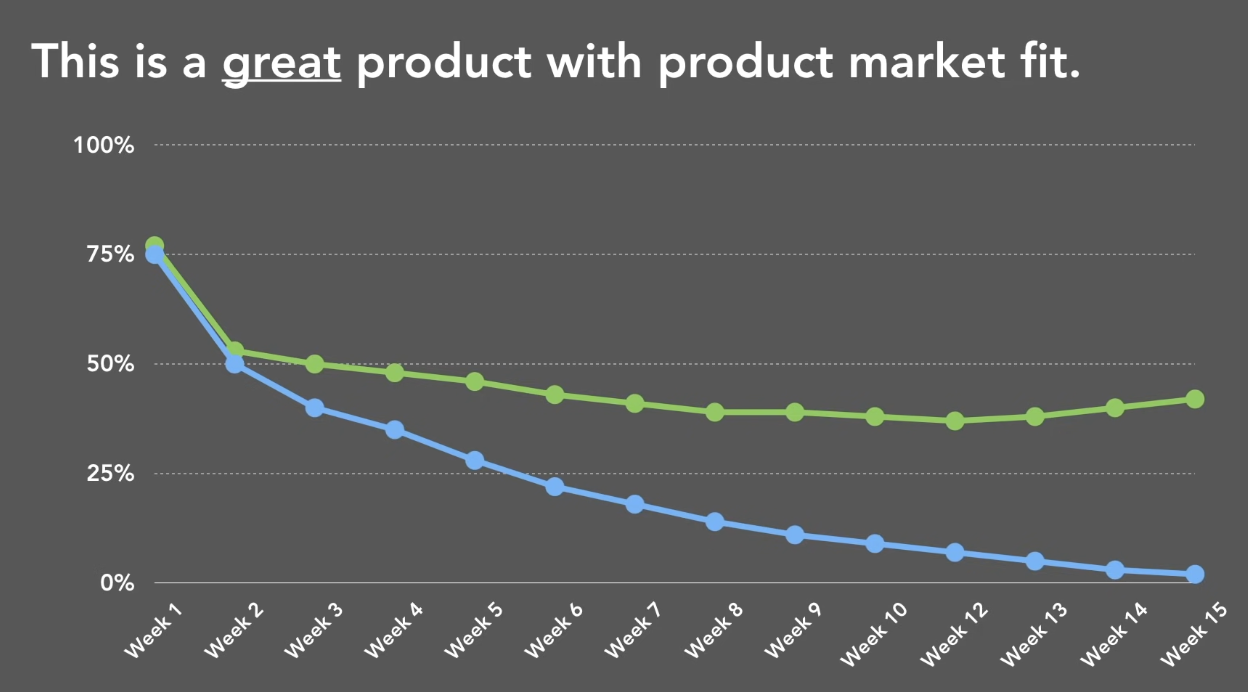
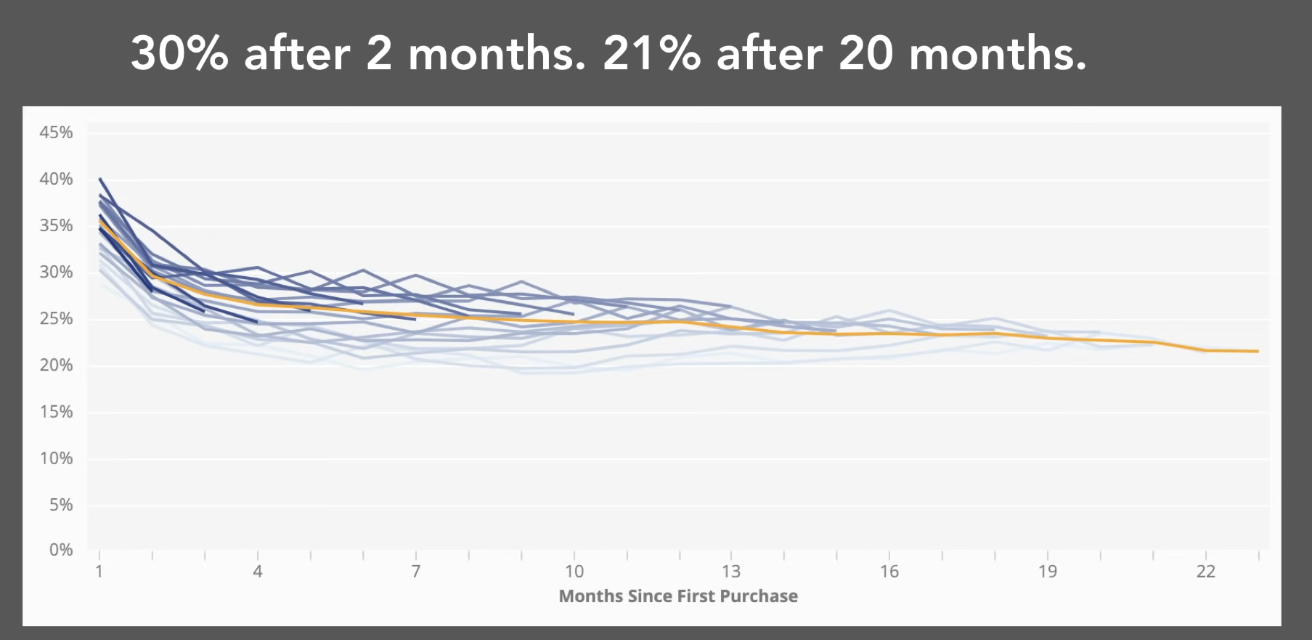
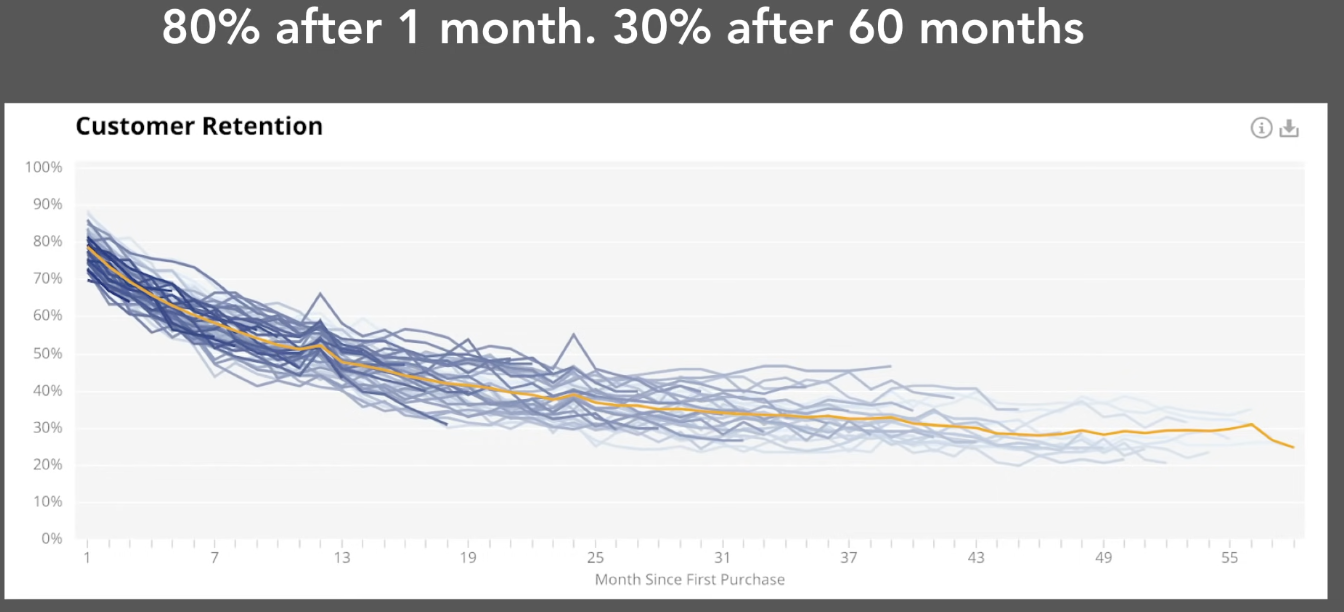
- They might tell you things but what they do is gonna be the most important thing
- Other (worse) ways to measure PMF
- Net promoter score - not great
- Surveys - often biased
- “How would you feel if you can no longer use this product”
- These are not a good metrics for PMF
- Registered users
- Visitors
- “Conversion rate”
- “Customers that aren’t paying”
Growth channels & tactics
- This section really applies if you have PMF
- because would you work on trying to get more people to a product that no one is using your product anyway
- Wait until we have people that care about our product
- 2 Ways to grow at scale
- Product Growth / Conversion rate optimization
- This mean: engineer, designer, PM and everyone working on improving specific parts of your product to get more people through that funnel
- Growth Channels
- platforms in the world that people tend to discover products on (eg: google, facebook, instagram)
- Product Growth / Conversion rate optimization
- Conversion rate optimization
- Your product is a funnel / growth loop
- example: AirBnb P1 (home page) P2 (search result) P3 (Listing page P4 (Booking page)
- Your funnel? % of people that make it from P1 - P4
- Your job is to figure out
- How many people make it that far?
- Why are they dropping off?
- What can i do to increase that number
- Multiple teams and people at startups that work on those things
- Every step in the funnel have drop-off
- Every single stage in that funnel is going to have some kind of drop off for some reason
- Your product is a funnel / growth loop
- Conversion rate optimization areas
- Internationalization (translating it the product)
- Authentication (make sure this flow work really well eg: Pinterest, AirBnb)
- Onboarding (Ask how to make the experience better)
- Purchase conversion
Growth channels to explore
- Again: don’t do this if you don’t have sense of that this is something people want

- Most new ideas are rare behavior either because they don’t exist yet or they’re not something you do every day
- Are users experience get better with more people on your product? if so do virality (eg: linkedin)
- If you don’t have people pay for your product yet skip the paid ads; you shouldn’t spending time about marketing
- Most companies grow huge using only 1 or 2 of these channels
- Tactical advice on some of the channel image above:
- Referrals & virality
- WOM is Airbnb largest growth driver
- Referrals is engineered WOW

- Good example of referral email:
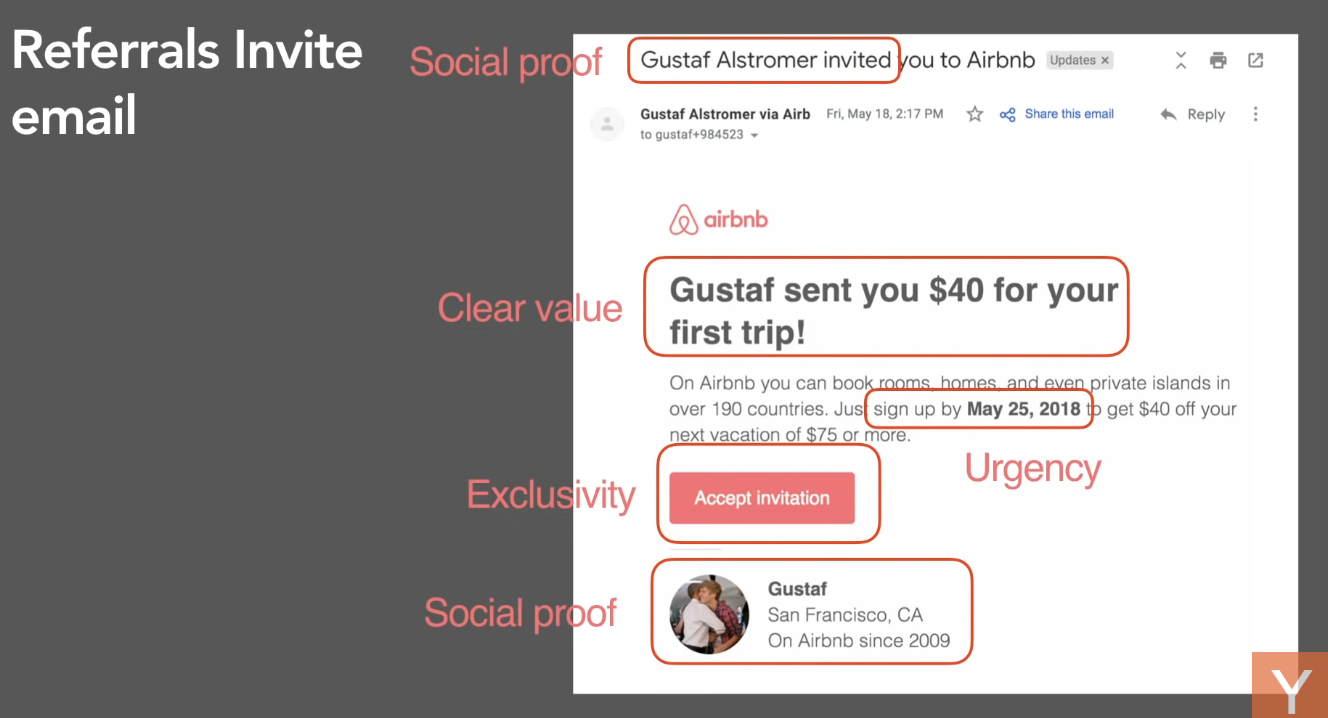
- Paid Growth
- Don’t do paid growth if you don’t have revenue
- CAC = Customer Acquisition Cost
- CAC / Payback time (Most important metric in online marketing)
- Predicted revenue must be higher than the CAC / cost
- Attribution
- Channels: Facebook, Instagram, Google, Youtube
- SEO (Two main levers)
- On-page optimization
- Every optimization starts with keyword research
- Which page am I trying to rank for what keyword?
- SEO Experimentation
- Off-page optimization
- Who is linking to you?
- On-page optimization
- Referrals & virality
Making decisions using A/B testing
- Most of you don’t need this right now (don’t do it!)
- a/b testing calculator
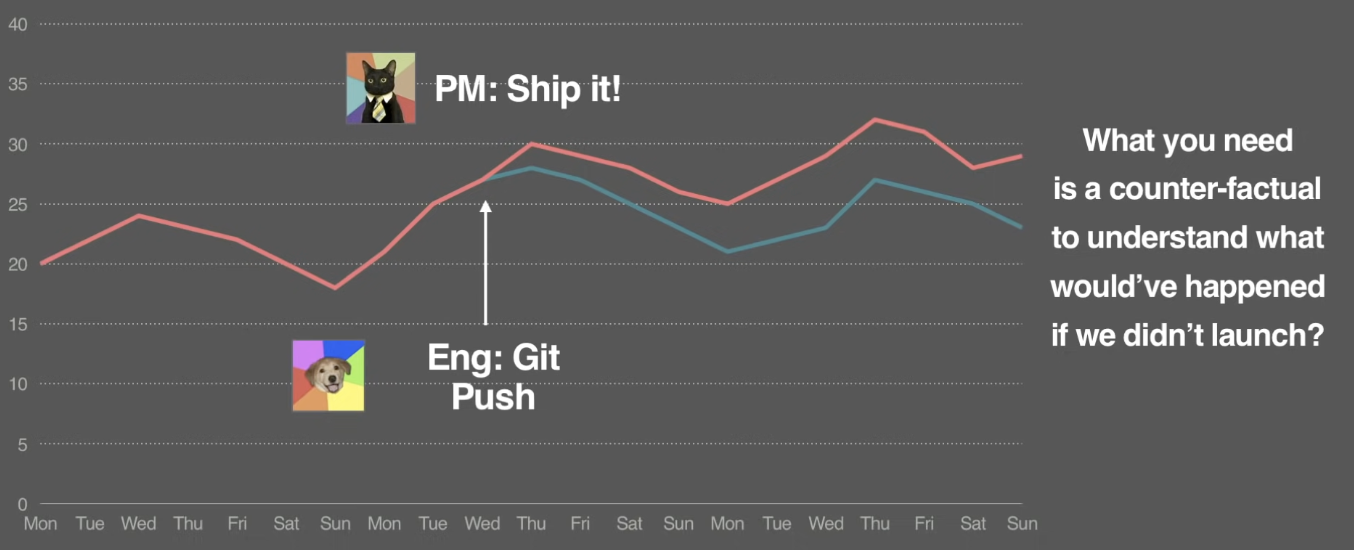
- Having 2 alternative or parallel universe at the same time then measure a metric that matter to you
- Experiment review!
- Place your bet!
- Product decisions are hard (using data to make them is a good way)
- Most of you won’t be doing A/B testing for a long time
- a/b testing calculator
Summary
- Start by doing things that don’t scale
- Measure your retention / PMF
- Build a culture of experimentation
- Use data and experimentation to decide what’s the best decision and not have the loudest voice in the room decide what the decision is
Notes
[1] The concept of “doing things that don’t scale” comes from Paul Graham’s foundational essay. It’s a core YC philosophy for early-stage growth: manually recruit, onboard, and delight users before trying to automate or scale.
[2] The cautionary reminder that “most startups think they have product-market fit but don’t” echoes advice from YC partners like Michael Seibel and Dalton Caldwell, who emphasize measuring user behavior over relying on surveys or NPS.
[3] The retention curve visualizations and PMF measurement tactics are drawn from YC startup school curriculum and talks by experts like Gustaf Alströmer. They emphasize usage-based metrics as the gold standard for PMF.
[4] The distinction between product growth and growth channels, as well as funnel examples (like Airbnb), are based on real-world scaling experiences from YC-backed startups and internal product teams.
[5] The advice to avoid paid marketing until you have revenue and a proven product comes from countless YC office hour sessions and case studies. Many startups fail by prematurely optimizing CAC before they know LTV.
[6] A/B testing and experimentation practices outlined here are influenced by growth leaders at companies like Airbnb, Dropbox, and Pinterest. YC generally advises early-stage founders not to start A/B testing too soon—until traffic, data volume, and product stability justify it.